The best client a rock and roll photographer could land in that, or any day was Rolling Stone. I ended up working for them regularly for several years. As a junior photographer, my editor was Jodi Peckman, and her fellow photo editors Nancy Iacoi and Gioia Speciale. Those latter two kept a running docket of misspelled mail on their doors. The entire department was delightful, but Jodi was responsible for me having a relationship with perhaps the most prestigious client in the business. I met her when SPIN played Rolling Stone in softball one summer weekend. We traded t-shirts and I think I still have the RS one I wore regularly for years.
After softball, Jodi asked me to call if/when I left SPIN, as Bob’s hiring and abrupt firing practices were well known in the business. I did of course, and Rolling Stone quickly became my best and most awesome client. While I never ascended to the upper levels of photographing features I nonetheless maintained a healthy level of shooting one to two, sometimes more, shoots per issue. These were generally for one-offs or back of the book features and would show one or two pictures. Rolling Stone was about the most prestigious photo client one could have at the time in the rock business. They were a valued client for the prestige alone. However, two more factors made RS valuable to me. They paid literally $350 for a day’s shooting, not very much. But I retained copyright on the photos and kept the right to resell them through my stock agency. Those rights could (and often did) end up being much more valuable than the initial shoot fee. Infinitely more valuable than both those is the access to important artists that let me create these images we’re still talking about lo some forty years after the events. When seeking work as a photographer of celebrities, among the first questions you had to answer was: who’s the last famous person you photographed? Those Rolling Stone jobs were instrumental (heh) in giving me access to famous people, which begat more access to more famous people. Whenever I would visit Jodi to drop off some film or take her to lunch I would pass fifteen or twenty portfolios on the way to her desk. I would thank my lucky stars for having connected with her outside of the pressures of the portfolio review. There is no possible way I would have broken in there the traditional way. I don’t know that anyone could. It was a tangentially related work event that introduced me to Jodi, certainly. I had gone home that day with a RS t-shirt and an invitation to call her and get some work. I immediately jumped on it of course, thanking my lucky stars and going on to photograph such luminaries as Iggy Pop, Princess Stephanie of Monaco (I know, right?) and Sir Charlie Watts. Not bad wages for the cost of a sunburn acquired in an afternoon of softball in Central Park. I believe Rolling Stone crushed SPIN that day, but am remaining purposely fuzzy on the details.
I first glimpsed Tonjua Twist my Sophomore year at Sarah Lawrence College, and fell instantly in love. Moon faced, tiny, streaky blonde hair, seemingly always in motion, Tonjua (pronounced Tonya) was from Kentucky, later in life learned she was part Cherokee, and charmed virtually everyone I ever saw her meet. As an ebullient young girl fresh out of the sticks it was natural, but I saw that same energy continue to affect people around her as she graduated college then began navigating the oft treacherous shoals of the fashion industry. She grew to be a stunner, leaving a trail of jilted suitors in her wake. It wasn’t only men who became instantly enamored with her. She worked at Vogue as an assistant to none other than Miss Wintour herself, in an eerie presaging of The Devil Wears Prada. I once made the mistake of showing a lighting test polaroid of Tonjua to Bob Jr. and he was off to the races, badgering me for her number, then badgering her endlessly to style, edit, write, model go to lunch, whatever it was, he must hang out with her. Tonjua’s memorial service after her untimely and shocking death in the year 2000 presented an amazing array of people from many walks of life; all in love with this amazing creature, devastated at the early extinguishing of her joyful light.
Of course, when Rolling Stone called to ask me to photograph Iggy Pop, the hairs on my nape pricked up. I was excited by the opportunity to shoot a rock and roll legend for a prestigious client. But Iggy was known as kind of difficult. I’d begun learning that everyone had an agenda, and that subjects weren’t necessarily as psyched to appear in RS or put up with much in the way of bullshit for the sake of a photoshoot as maybe I was. I was going to need all my tricks, tips, and luck for this one. Tonjua Twist on set would be my good luck charm. Oh, along with Nancy Sprague, a makeup artist I’d long used for difficult male clients. She too was a knockout, but more to the point, by the time she had spent forty five minutes scalp and neck massaging subjects even the most recalcitrant CEO, especially the most recalcitrant CEO would be putty in her, and therefore my, hands. Assistant Patty, stylist Tonjua Twist and groomer Nancy Sprague: totally my A team, what rock star could withstand that charm offensive?
We would shoot in my loft studio at 275 Church Street. We had been fooling around with the midnight lab runs and endless filter tests for some time to create never before seen cross processed images. After weighing the pros and cons and steeling myself for the high wire nature of the attempt I decided to do my first commercial job with these new techniques. Unlike digital, when you screwed up in analog film shooting or processing it was over. There was no fixing it, a reshoot was the only recourse. If the worst happened, Iggy lived in NY, could probably come over for a reshoot. Hell, I used to run into subjects like Sonic Youth or DeeeLite in the City all the time. I tried to cover my bets as much as possible by shooting some classic black and white. I thought that approach married with Iggy’s expressive and well known face would be interesting. Shooting “normal” color film alongside cross processing was difficult because of the extreme filtration and lighting effects required. I went all in on the cross processing, shooting several of the different looks we’d developed. Of course, this made shooting Polaroids difficult. Polaroid “instant” photos, they really took ninety seconds, (the longest ninety seconds in show business sometimes!) to show to subjects and thus gain their trust that you knew what you knew what you were doing.
Iggy Pop did not disappoint. He was a giant pain in the ass, freaking out, of all things, about the brands of hair products we had on set. Seemingly immune to the charms of my secret weapons, tensions were high as we sent Tonjua out to Canal Street to look for acceptable brands of hair gel for Mr. Pop. Nancy peeled him grapes (shut UP, it’s an expression!) while we nervously tweaked lights and camera angles, whispering amongst ourselves. He had arrived unaccompanied, which is usually a good sign, but I had been surprised by the vehemence of his hair products requests.
This was the guy who famously crawled, bleeding, through glass onstage at CBGB’s. He was a truly magnificent specimen, taut and beautiful. But he had to have the right hair gel. Tonjua returned with an armful of bottles, one of which was apparently good enough, and we were off.
Creating a portrait of someone is a dance, with trust, timing, and communication all essential to achieving an excellent result. Despite initial reticence, Iggy is a professional. He has his requirements, and when they are met, he is all in. Our dance proceeded apace, until I asked him to repeat a move I’d missed.
“Can’t, gotta wait for it to come around again…” the enigmatic rock star murmured.
Wait, was he doing Tai Chi? Church Street was in the Tribeca neighborhood of New York, cross Broadway and you were in China Town. When I’d walk Otis just after dawn down there I would be shocked to run into hundreds of Chinese ladies doing these odd moves in the blooming: that Tai Chi? Well yeah, turns out you don’t get that muscular body by crawling around on stage, you practice an ancient and heretofore obscure Chinese martial art. I chuckled, waited him out, and indeed he came around again so I could shoot the angle I wanted. He was a total pro, and as we danced I think he sensed my care and attention and did his best to play his role to the hilt. If I wanted him to chew scenery he would gladly go there.
Nancy had done her part to mollify him on set. Tonjua had crushed her role, bringing racks full of incongruously beautiful suits and jackets that Pop loved. We had also worked to bring dried flowers and textured jewel colored fabrics to add visual interest and give Pop things to play off of. The longer we shot the more fun we had, my typical “one more roll” was repeatedly met with, “OK!” from the famously recalcitrant and uncooperative star. I suspected we had done pretty well, but had to hold my elation until the next day, when Soho Color could do my midnight cross-process run.
And oh boy did we crush it. These pictures are among my favorites ever. All the more so when I miss my friend that helped achieve them. Career-wise, it was a high water mark as well. To her credit, Jodi Peckman, my editor at Rolling Stone had freaked out when she saw them, ignoring my “and I did black and white for coverage,” and literally running out of her office to take the chromes upstairs to show Jann Wenner himself. She confirmed what we’d all suspected: the combination of subject, styling, and lighting effects was perfect. It was only too bad they only had room to run it quarter page. Oh well. That quarter page was widely seen and remarked upon, as the first appearance of cross-processing imagery in a national publication. Soho color started offering cross processing to regular clients, during the regular runs. Turned out it didn’t really ruin the chemicals after all. I did have an LA color lab refuse my cross processing request before that, sniffing down their nose, “We have a lot of art students ask for that…” After Iggy in Rolling Stone everybody wanted cross processing. It became so much of the look of the era that the iPhone app Hipstamatic recreated it, available for $2 in the App Store. Cross processing, both kinds, is available now as a (free) plug-in to Adobe Lightroom, Apple’s Aperture, and Capture One. It drifts in and out of style, one week it’s wired the next tired. Some years later I was showing a portfolio to a woman from Newsweek. “Yes,” she sniffed, “I remember you, the special effects photographer!” I guess I see her point, but I never really saw it that way. I thought of my work practice as an extension of that Ansel Adams aesthetic I’d learned all those years before: experiment, record, and keep pushing until you find a way to get your image to look how you want. I use the same ethos now in my digital photography work, just passing its twentieth anniversary. Ansel, meet Iggy, Iggy, Ansel. And both of you say hello to Jann.

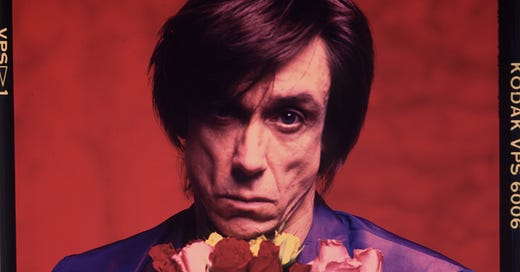



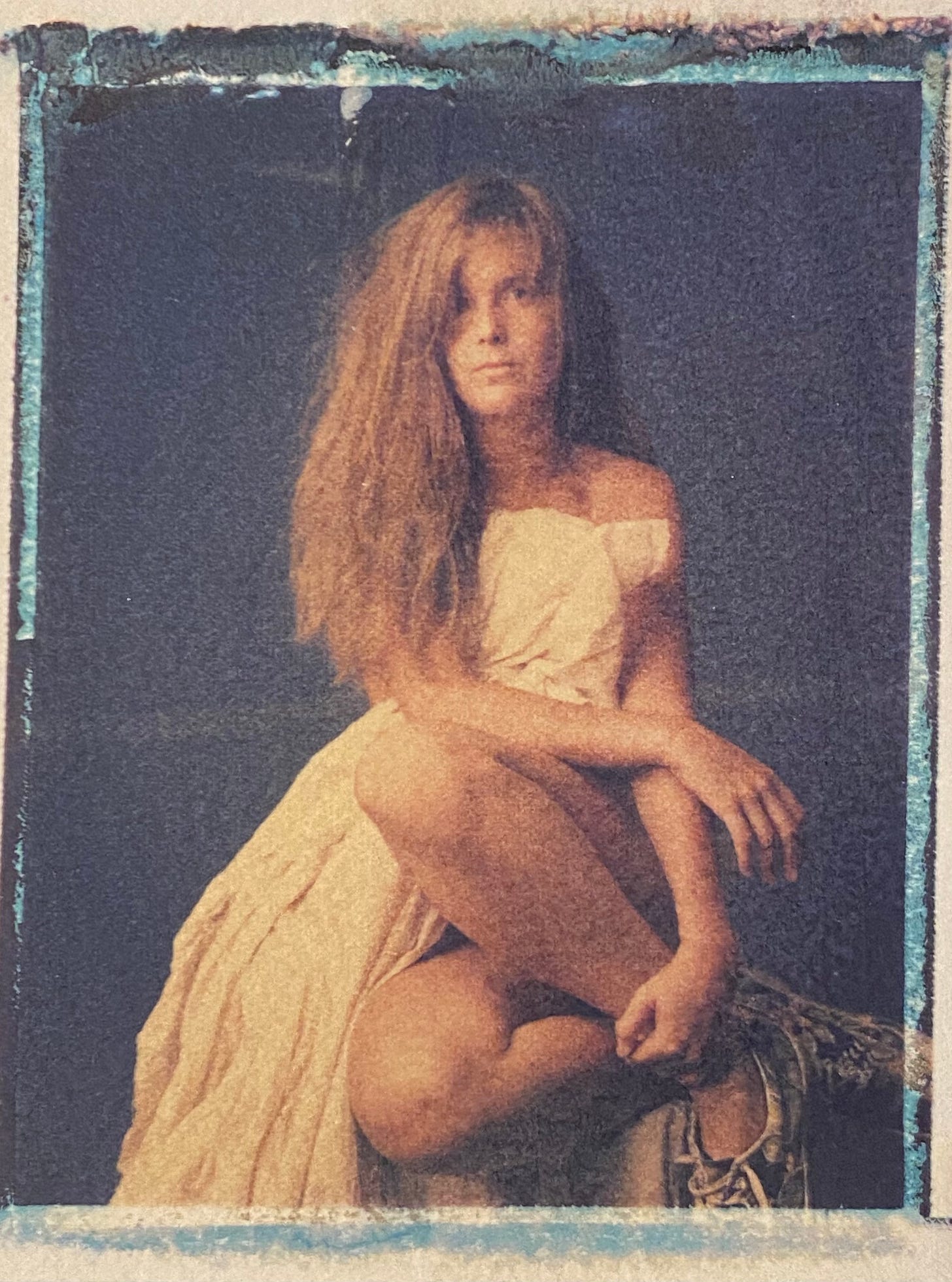
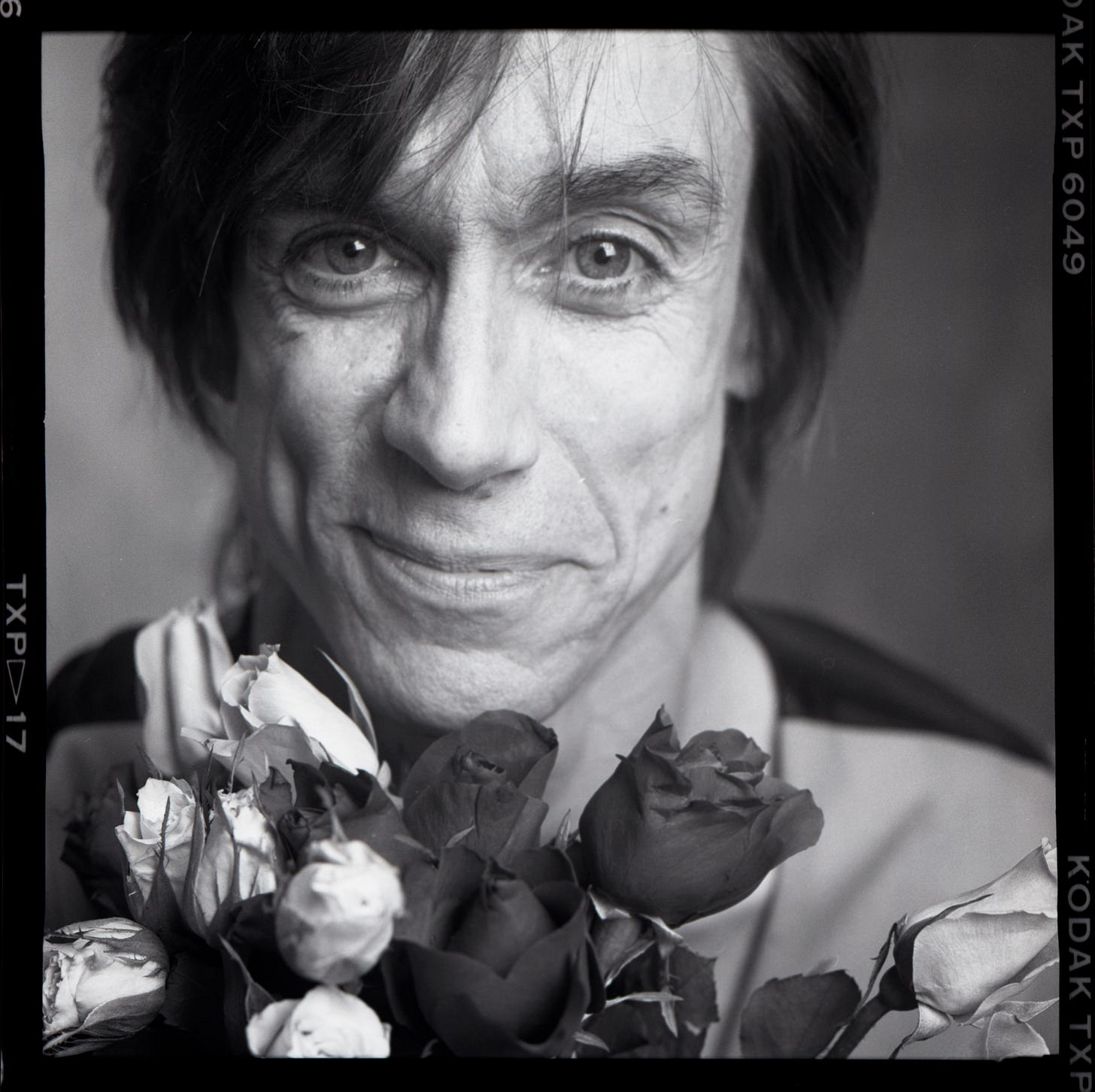
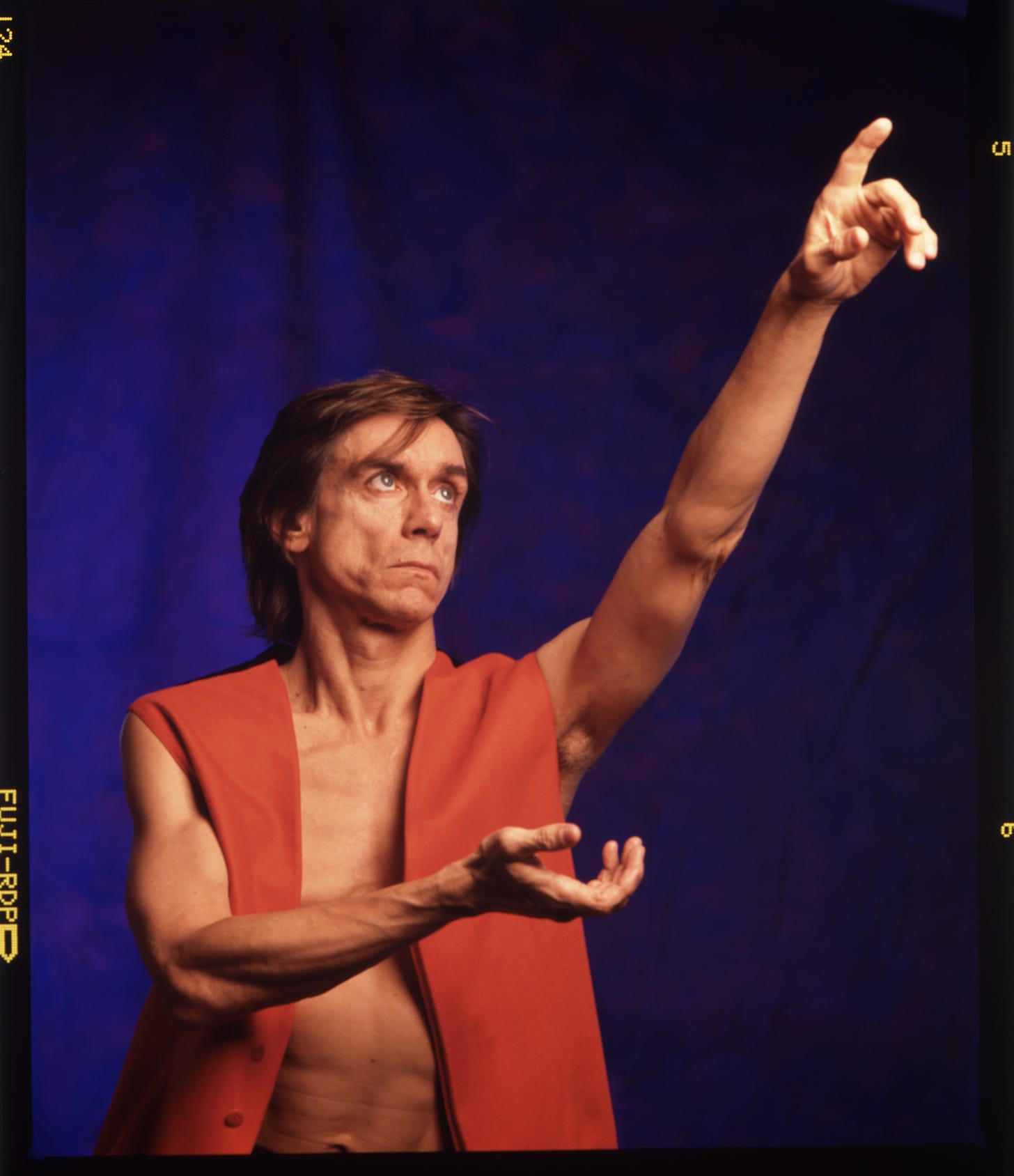
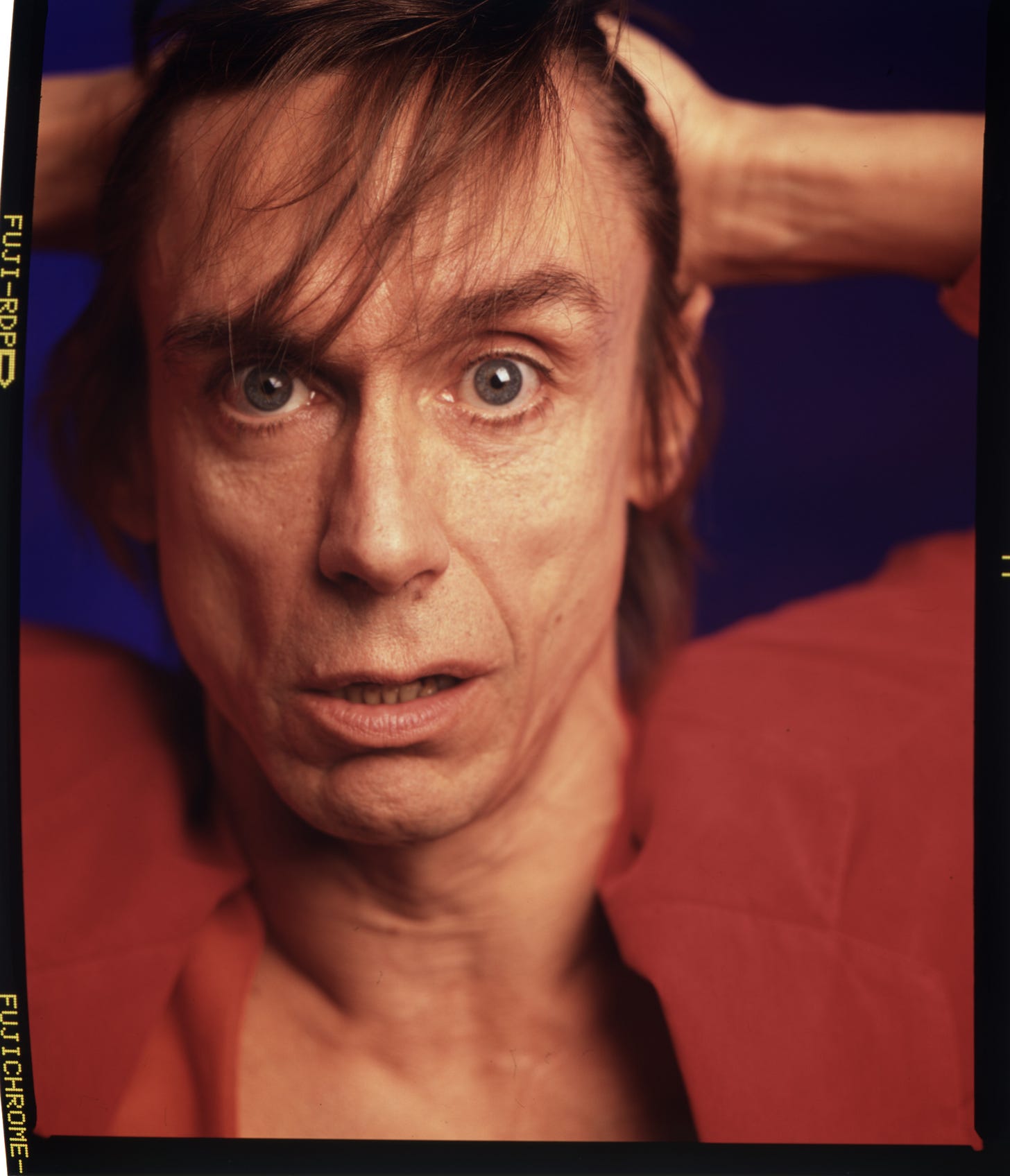
Thanks for reading and commenting!
Thanks for this wonderful post.